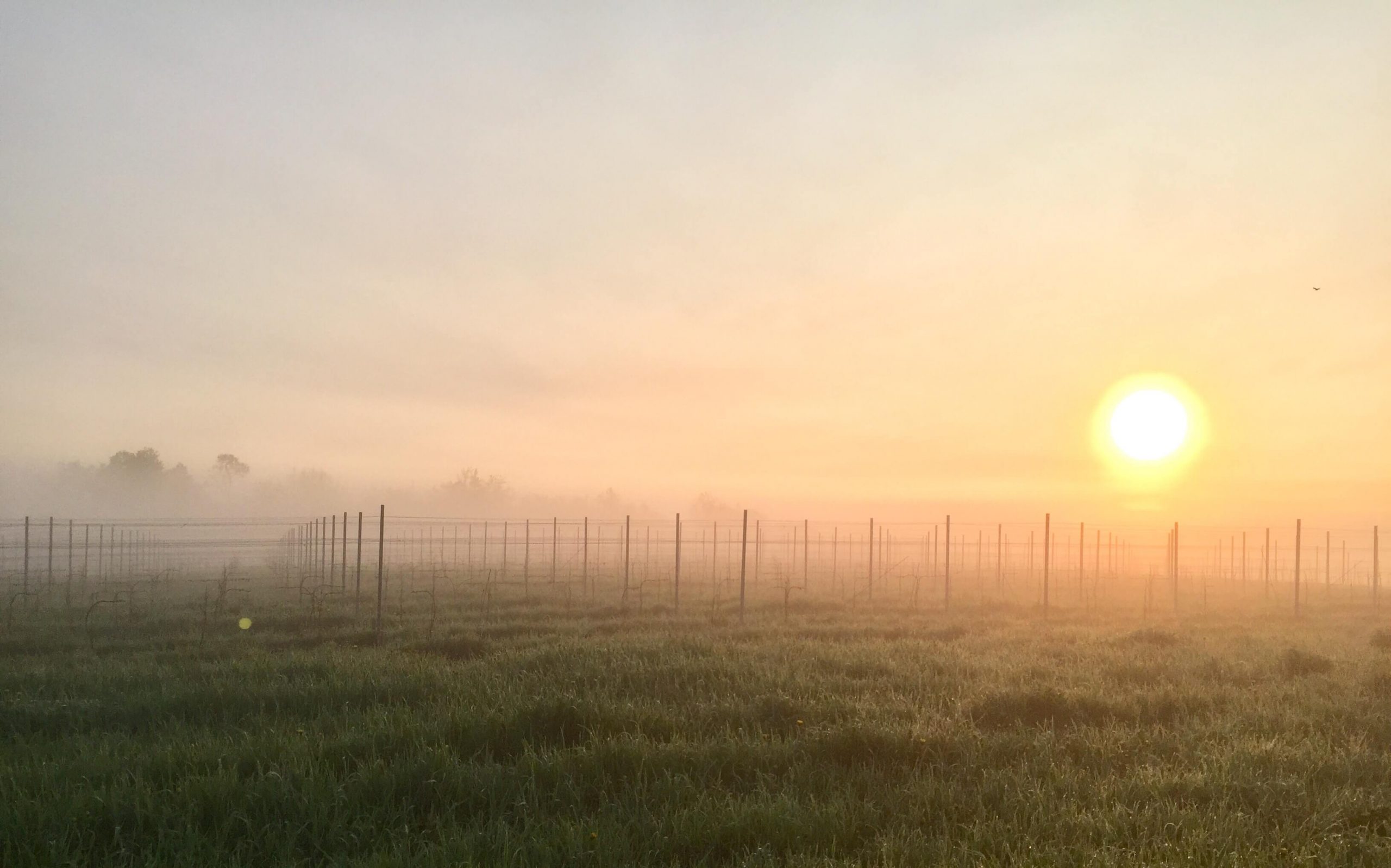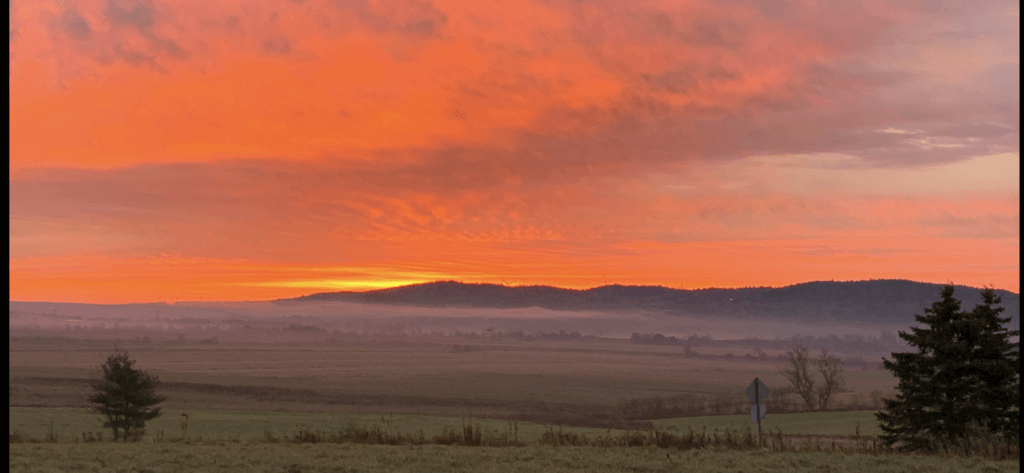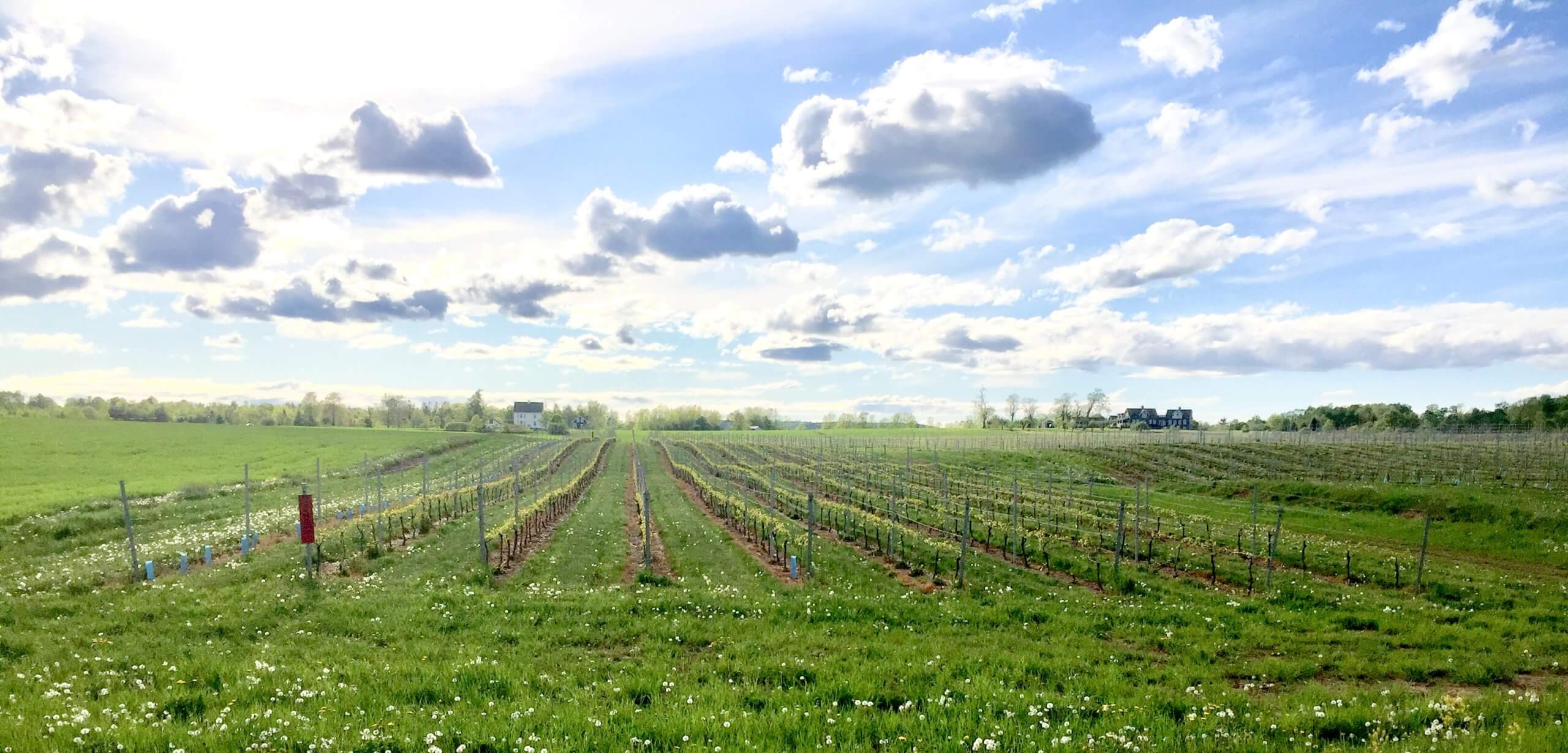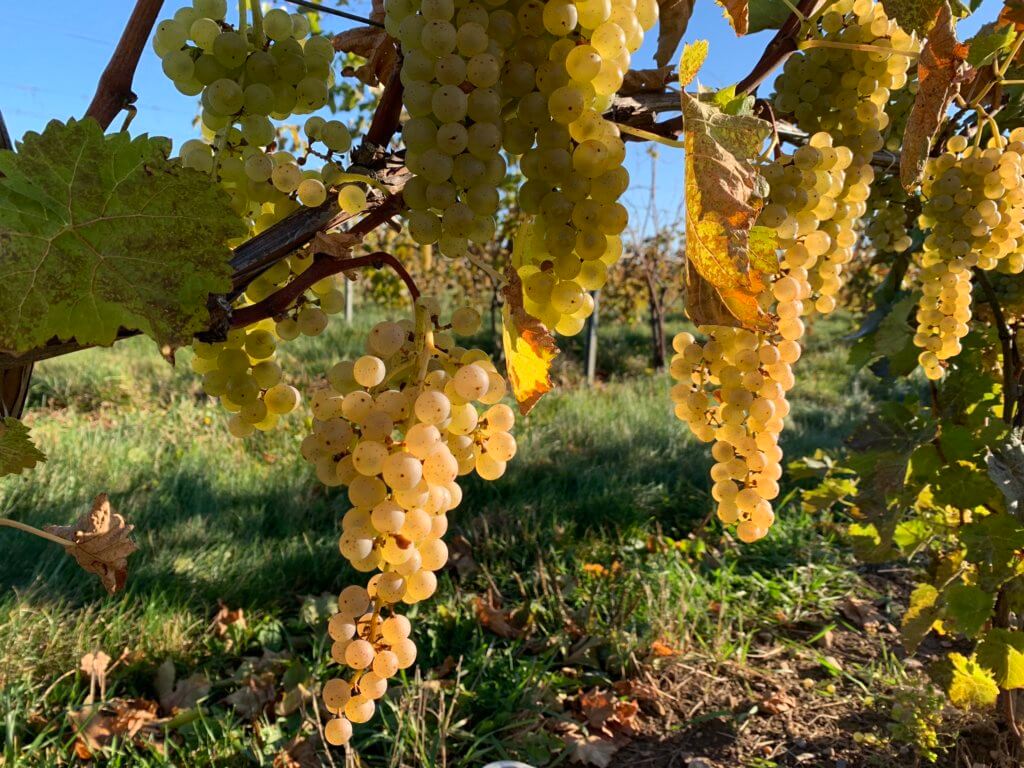Overview
Spring 2019 revealed more dead plants from winter kill in all vinifera and the less hardy hybrid varieties in addition to the dead plants already identified as being killed by the frost in 2018. In total, 30% of Johnston Vineyard vines died in 2018-19. The majority of the dead plants were vinifera followed by less hardy hybrids like Seyval, Vidal, Geisenheim 318 and Muscat. Very cold hardy varieties like Marquette and Petite Pearl did well and fully recovered from the frost with no additional winter kill. All the plants were young ranging from 2 yo to 4 yo at the time of the frost.
Microenvironments in the Vineyard
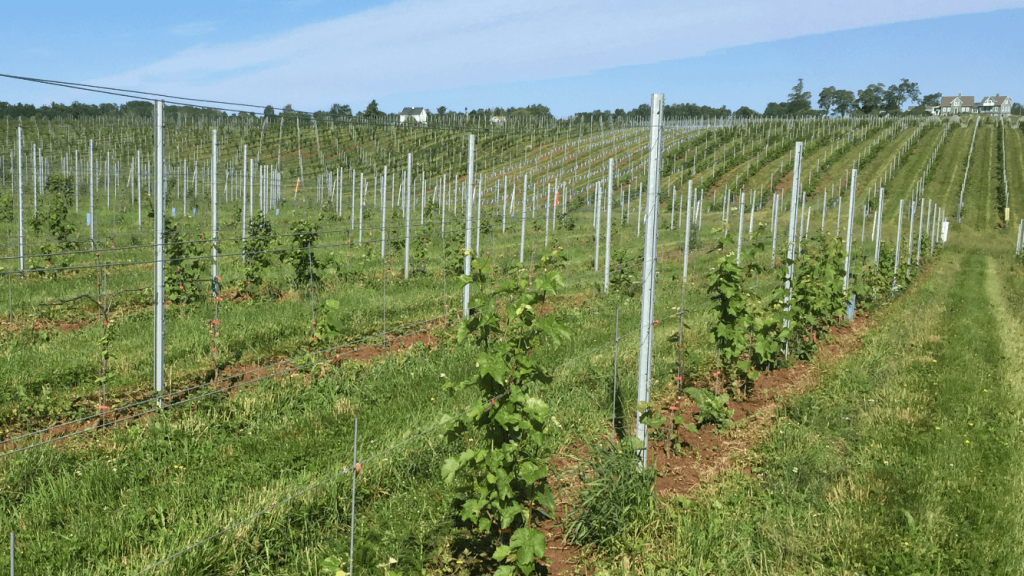
Microenvironments within the vineyard played a significant role in the frost of 2018 and subsequent harsh winter of 2018-19. Cold air from the frost built up in valleys damaging vines in these locations. Vines located in wetter areas that survived previous less severe cold spells succumbed to the 2018 frost. Areas of less vigorous growth due to various soil deficiencies throughout the vineyard suffered more damage than areas that had no noticeable soil issues. A large number of these frost damaged vines were then killed outright in the following winter of 2018-19
Other Factors Associated With the Vine Kill
- The time between the last spring frost and autumn first frost was short at approximately 111 days (111-135 days depending on weather station) for 2018 compared to 192 days (192-202 days) in 2017. Only the Petite Pearl and Vidal produced grapes, albeit a small, poorly ripened crop. The short season prevented adequate hardening off going into winter. Lack of snow cover contributed to winter damage.
- Shallow roots in areas of hard clay may have caused winter root damage during a winter marked by extreme variation in winter temperatures.
- Grape hoe damage was apparent on the vinifera trunks. This was due to overly aggressive hoeing in the first 2-3 years. Trunks were soft coming out of the grow tubes. This may have been a major factor in the demise of most of the 5 yo vinifera. Although adjustments were made to the sensory rod and the pressure valve some damage continued to occur in the 3 and 4 yo plants.
- Potassium was low during the first 3 years of the vineyard’s existence and phosphorus continues to be low. This may have contributed to poor hardening off of vines and weak root development. Copper (old apple orchard) was very high in 2 vinifera blocks which may have affected root growth.
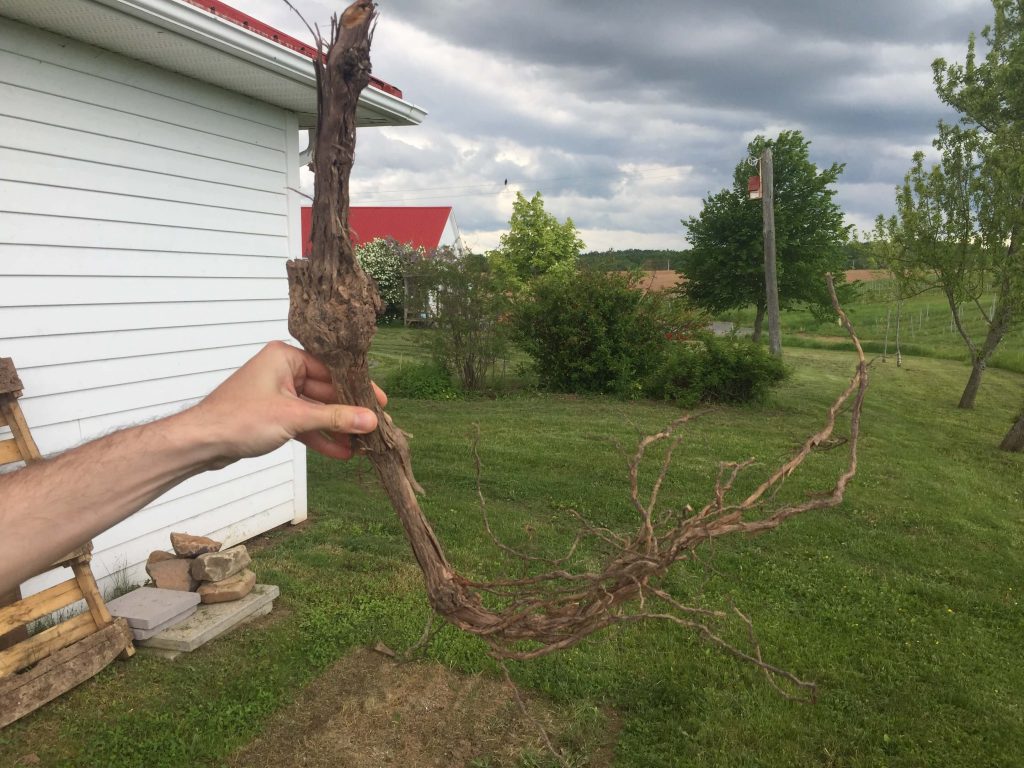
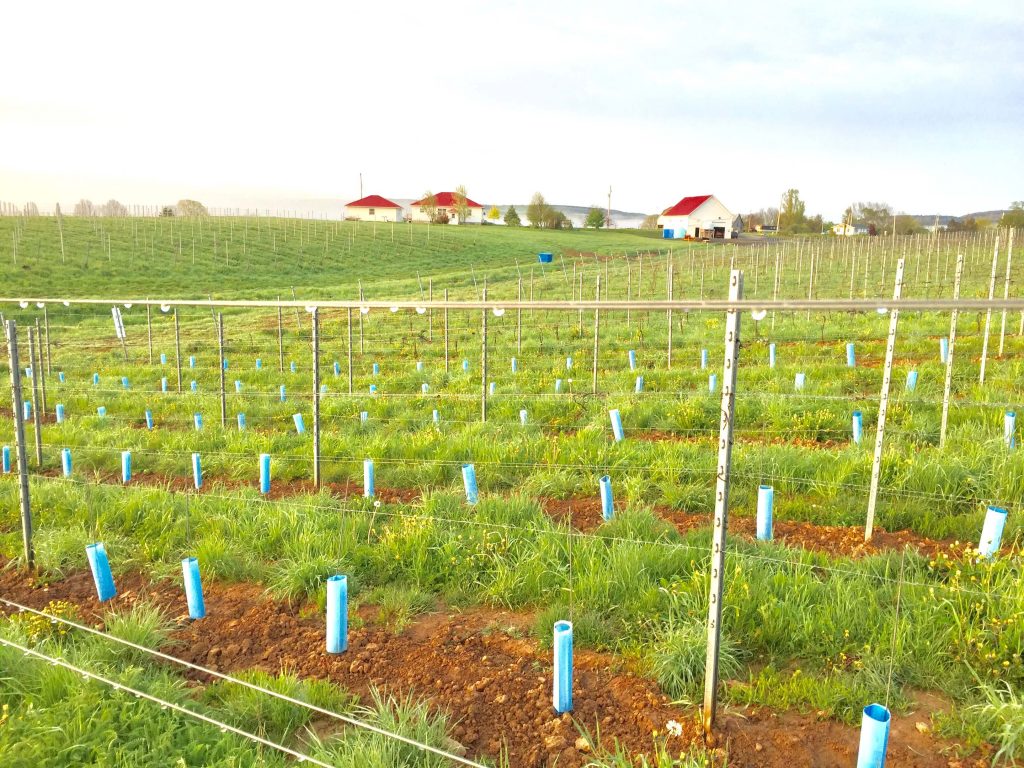
Organic vs Sustainable Grape Farming Following the Frost
It was determined that organic farming practices were impractical during replanting of the vineyard, which will last 4 years. The inability to avoid damage with the grape hoe to young plants and damaged plants sending up suckers has prevented use of a mechanical weeder. A firm plastic pipe around the new plant trunk would suffice but a large number of tubes would be required. Hand hoeing is too expensive and impractical on 30 acres of vines. Thus, a herbicide like Ignite is required.
The limited selection of organic certified nutrients prevented optimal use of fertilizers. Organic pesticides like copper and sulfur have controlled mildew so far and it is anticipated that synthetic pesticides will be used only if disease gets out of control.
Long Term Effects on Specific Varieties
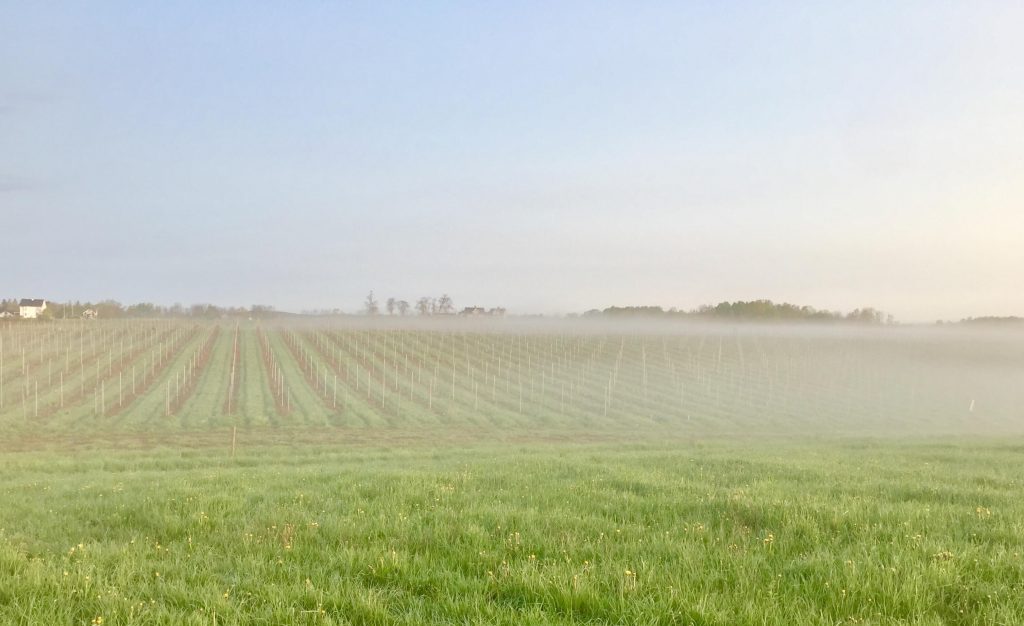
Marquette/own root: Some trunk damage with good suckering to replace damaged wood. Normal grape crop.
Muscat/own root: 20% loss of plants, most of which became evident once winter was over. Good suckering from damaged plants suggests new trunks will survive for 2020. Marked reduction in grape crop.
Petite Pearl/own root: No loss of plants immediately after the frost or in 2019. With no damage evident in 2019 this variety is the star of the frost prone vineyard. Normal grape crop.
Riesling 239/3309: Five year old plants were extensively damaged in 2019 despite a good recovery from the frost of 2018. Trunk damage due to crown gall was prominent. Moderate recovery has occurred as the summer progresses. 90% crop loss.
Riesling 21B/3309: These 4 yo plants had a higher survival rate than the Riesling 239. About 30% of the plants died in the winter, but vigor of the remaining plants is good.
Cabernet Foch: A complete loss speaks strongly against growing this variety in Nova Scotia.
Chardonnay 548/3309: Five year old plants held up best of the vinifera. However, extensive crown gall killed 50% of the plants and will likely kill the remainder in the next 2 years. Crown gall was largely due to overly aggressive grape hoeing and the frost. Three yo Chardonnay fared much better although 20% died, mostly in low lying areas. 50% crop loss.
Vidal/own root: This variety recovered in 2018 to produce a small crop of poorly ripened fruit but the winter resulted in a 20% kill and poor vine vigor in 2019. A large pith was noted in many fruiting canes. Growth is behind other vineyards not affected by the frost. Good suckering may save many of these vines for next year.
Petite Milo/3309: This is a hardy vine and rebounded from the frost with multiple basal shoots last summer. About 20% of the vines were dead this spring, most of which died over the winter. Aggressive thinning of these 3 yo vines to one cluster/shoot reduced yield by about 50%.
Seyval Blanc/3309: The 4 yo Seyval was hard hit by the harsh winter conditions and 30% of the vines died. About 40% of the remaining live vines show poor vigor. Aggressive thinning to one cluster/shoot reduced yield by about 50%.
Pinot Noir 828 and 667/101-14: Among the vinifera frost damage was greatest in the PInot Noir. Additional winter damage occurred. About 60% of the vines were dead by this spring. Crown Gall was prominent in all the dead plants. 80% crop loss.
Geisenheim 318/own root: G-318 was surprisingly sensitive to the frost and harsh winter with a 20% loss of vines. The healthy plants have multiple clusters and no thinning is planned. 40% crop loss.
Aggressive Foliar Nutritional Program
An aggressive foliar nutritional program which involved spraying Organomex, Symspray, Boron, Zinc, Molybdenum and Iron was applied. This was monitored mainly by SAP testing of the leaves (Alyson Bremner, Truro Agromart – 902-895-2857). This was based on the premise that root development was impaired by the frost and winter damage and absorption of nutrients was poor. It seemed to have a particularly beneficial effect on under performing vines like Muscat, Vidal and Seyval. Vigour in the vinifera seemed enhanced. A granular 6-30-19 fertilizer was also spread to boost the low phosphorus.
Soil Microbial Activity
Silica levels measured with SAP testing were very low and was consistent with a decrease in microbial activity. It is not clear whether this is due to a lack of organisms or a lack of activity. “Tea” can be applied to the field if organism count is low. This can be measured by burying white cotton underwear in the vineyard once the soil warms up and digging it up in 6 weeks. If the organism count is low (as it was in Johnston Vineyards) then the underwear will not be eaten. Tea from outside the province of Nova Scotia may not provide organisms that thrive locally. The repeated application of BioMax as a soil drench would likely be helpful even if the organism count is low. This is currently being evaluated at Johnston Vineyards.
Sucker Support in Damaged Vines
Development of suckers to replace damaged and Crown Gall infected trunks was critical to the survival of many plants. Vine rods were inserted next to the sucker and used to guide new growth. The rods were removed once the sucker reached into the tuck wires. This method prevented breaking of the sucker by excessive bending and avoided crowding the new growth too close to the main trunk.
